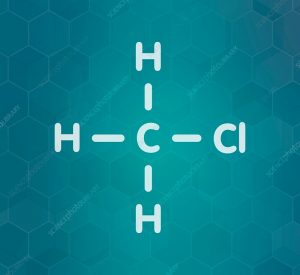Chloromethane belongs to group of organic compound called as halo alkanes. It is extremely flammable colorless gas which usually has mildly sweet odor and when detected in abundance is highly toxic in nature. Chloromethane can be produced naturally and synthetically. Chloromethane is produced naturally by action of sunlight on biomass and chlorine present in sea form. Synthetically, chloromethane is synthesized by boiling mixture of sodium chloride and methanol. Initially, chloromethane was used as refrigerant. But due to high toxicity level, I was discontinued in consumer products. Now-a-days, it is used as chemical intermediate to produce derivatives of chloromethane such as methylene Chloride, methyl chloride, carbon tetrachloride, chloroform.
Related Project: Chloromethane - Manufacturing Plant, Detailed Project Report, Profile, Business Plan, Industry Trends, Market Research, Survey, Manufacturing Process, Machinery, Raw Materials, Feasibility Study, Investment Opportunities, Cost And Revenue, Plant Economics

Usage of Chloromethane in Various Industry:
· Chloromethane is also known as methyl chloride or Refrigerant-40 and has been widely used in refrigeration technology since its industrial manufacture. It belongs to a family of organic compounds called halo alkanes and has a mildly sweet odor. It is highly flammable, which is why it is carefully used in industries. It has a number of applications including being used as a refrigerant, industrial solvent, silicone polymers, laboratory chemicals, chlorinating agent, propellant, herbicide, local anesthetic, sealants, adhesives, and others. In the current scenario, chloromethane is being widely used as in the pharmaceutical industry which has made it as the chemical’s most important end user. This application segment is expected to grow with a noticeable CAGR of 5.66% during the forecast period of 2019-2025. Since China is a global superpower in the manufacturing sector, it has made APAC the geographical leader of the chloromethane market. In the year 2018, APAC held a massive regional share of 42%.
Related Books: Chemical Technology (Organic, Inorganic, Industrial), Fine Chemicals
· Pharmaceutical segment dominated the market with a revenue share of 34.7% in 2019. The pharmaceutical industry is anticipated to grow from USD 1.2 trillion in 2018 to over 1.5 trillion in 2023, according to Pharma World Magazine. This growth is anticipated to benefit the associated industries. Chloromethane is used as an intermediate in the production of medicinal drugs. Methylene chloride is mainly used as re-crystallization and an effective reaction solvent in the extraction of numerous pharmaceutical compounds and the synthesis of antibiotics and vitamins.
Global Chloromethane Market:
The global chloromethane market size was estimated at USD 4.58 billion in 2019 and is expected to register a compound annual growth rate (CAGR) of 4.9% from 2020 to 2027. Rising demand for silicone elastomers across various end-use industries, such as construction and automotive, is anticipated to drive the market growth over the forecast period. Chloromethane are colorless, water-soluble, highly flammable organic compounds with a faint sweet smell. They are prepared by the reaction of hydrogen chloride and methanol and can also be produced alternatively by the chlorination of methane. The chlorination process yields other compounds, such as methylene chloride and chloroform.

The global market for chloromethane is anticipated to grow at a moderate pace, owing to the stringent regulations imposed by the major governing bodies such as REACH and U.S. EPA. However, the market is driven by the increasing demand for silicon polymers in the electronic and automotive industry. Rising affordability and growing sales of passenger vehicles are also anticipated to drive the demand for silicone polymers. According to OICA, the production of passenger cars grew from 67.8 million units in 2014 to 70.5 million units in 2018. The demand for silicon polymers in the automotive industry is attributed to the regulations on the weight of the vehicle. Lightweight vehicles are fuel-efficient and thus reduce carbon emissions. Automotive production is growing significantly in Asia, thus driving the demand for silicone polymers in the region.
Conclusion:
The project report of NPCS covers all the major aspects of any business such as analyzing the market, confirming availability of various necessities such as plant & machinery, raw materials to forecasting the financial requirements. The reports made by NPCS has helped many of the engineers, project consultant & industrial consultancy firms in India and worldwide.